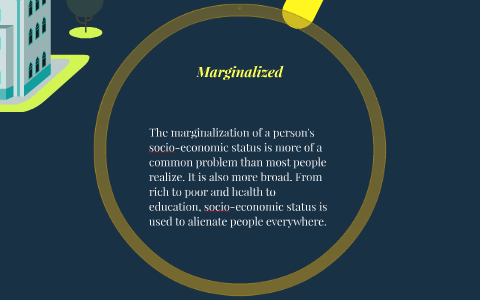The document titled “Socio-Economic Status of Marginalised Semi Urban Slum Dwellers of Ballavpur Mouza Midnapur District West Bengal” provides an in-depth analysis of the challenges and conditions faced by marginalized groups in society, particularly focusing on their socio-economic status. It highlights the systemic barriers that these communities encounter and emphasizes the need for targeted interventions to improve their living conditions.
Overview of Marginalization
Marginalization refers to the process by which certain groups are pushed to the fringes of society, resulting in limited access to resources, rights, and opportunities. This phenomenon affects various communities, including ethnic minorities, women, the elderly, and people with disabilities. The document outlines how historical injustices and socio-economic disparities contribute to the ongoing marginalization of these groups.
Key Challenges Faced by Marginalized Communities
- Poverty: One of the most pressing issues is poverty. Many marginalized individuals live below the poverty line, struggling to meet basic needs such as food, shelter, and clothing. The document notes that economic vulnerability is exacerbated by a lack of access to land and employment opportunities.
- Education: Access to quality education remains a significant barrier. Marginalized communities often face inadequate educational infrastructure and discrimination within educational institutions, leading to lower literacy rates and educational attainment. This lack of education perpetuates cycles of poverty.
- Healthcare Access: Health disparities are prevalent among marginalized groups. Limited access to healthcare services results in higher rates of morbidity and mortality. The document highlights that many individuals from these communities suffer from malnutrition and other health-related issues due to inadequate healthcare facilities.
- Employment Discrimination: Marginalized individuals often encounter discrimination in the labor market, relegating them to low-paying, insecure jobs with little opportunity for advancement. Women from these communities face additional barriers in accessing formal employment.
- Land Rights: Many marginalized groups lack secure land tenure or ownership, which contributes to their economic instability. The absence of land rights can lead to displacement and further marginalization.
- Social Discrimination: Discrimination based on caste, ethnicity, or religion continues to affect marginalized communities’ daily lives. This social exclusion can manifest in various forms, including violence and restricted access to public spaces.
Policy Responses
To address these challenges, the document discusses several policy initiatives aimed at improving the socio-economic status of marginalized communities:
- Reservation Policies: The Indian government has implemented reservation policies that allocate a certain percentage of seats in educational institutions and government jobs for Scheduled Castes (SCs), Scheduled Tribes (STs), and Other Backward Classes (OBCs). These policies aim to enhance representation and access for marginalized groups.
- Welfare Programs: Various welfare schemes have been introduced to support marginalized households, including financial assistance for education and healthcare services. However, the effectiveness of these programs often depends on awareness and accessibility among target populations.
- Community Engagement: Engaging marginalized communities in decision-making processes is crucial for developing effective policies that address their specific needs. Community-driven initiatives can empower residents and foster a sense of ownership over development projects.
- Economic Empowerment Initiatives: Programs focused on skill development and job creation can help lift marginalized individuals out of poverty by providing them with better employment opportunities.
- Improving Access to Services: Ensuring that marginalized communities have access to basic services such as healthcare, education, and sanitation is essential for improving their overall quality of life.
Conclusion
The socio-economic status of marginalized communities is a complex issue rooted in historical injustices and systemic inequalities. The document emphasizes that addressing these challenges requires a multifaceted approach that includes policy interventions aimed at enhancing education, healthcare access, employment opportunities, and social inclusion. By recognizing the unique struggles faced by marginalized groups and implementing targeted strategies to support them, it is possible to promote social justice and equity within society. Ultimately, improving the socio-economic conditions of marginalized communities not only benefits those individuals but also contributes to broader societal progress and cohesion.

Further reading:
Bangladesh J. Sci. Res. 29(1): 73-83, 2016 (June) banglajol
